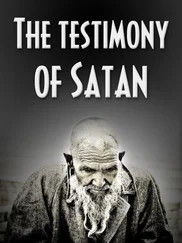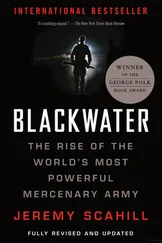Indeed, the AC-130 attacks resulted in a shocking number of Somali civilians being killed. In one particularly horrible incident, a large group of nomadic Somali herders and their families was attacked. The human rights group Oxfam alleged that seventy innocent Somalis were killed. “There were no combatants amongst them,” said an Oxfam official. “It could possibly be related to a bonfire that the herdsmen had lit at night, but that’s something they normally do to keep animals and mosquitoes away from their herd.” Oxfam joined Amnesty International in questioning the legality of the air strikes. “Under international law, there is a duty to distinguish between military and civilian targets,” Oxfam warned. “We are deeply concerned that this principle is not being adhered to, and that innocent people in Somalia are paying the price.”
The US strikes focused intently on the areas around the Kenya-Somalia border, the stronghold of Ahmed Madobe and his Ras Kamboni militia. Madobe was a protégé—and brother-in-law—of Hassan Turki, a career jihadist commander who founded the militia and led militant forces for each of Somalia’s successive Islamist movements: AIAI, ICU and, eventually, al Shabab. When the strikes began, Madobe and his men were making their way back toward their home base near the Kenyan border, unwittingly putting them directly in the scope of JSOC’s Task Force 88. Members of JSOC’s intelligence division, the Activity, were tracking Madobe’s movements and those of other ICU leaders. Like Indha Adde, Madobe had come to know and respect the international fighters who had come to Somalia and had helped in the battle against the CIA-backed warlords. His mentor, Turki, was now a US-designated terrorist. These facts, along with his leadership position within the Courts, put Madobe on a JSOC target list.
Madobe knew that the United States and Ethiopia were striking at fleeing ICU leaders and, after a few near misses, suspected he might be a target, so he and a small group made their way through the Somali countryside, trying to stay away from the growing number of aircraft overhead. “At night, we were afraid of lighting a fire to cook and in the daylight we did not want to create smoke,” he told me when I met him at an outpost near the Kenyan border. “We had no precooked food, so it was really very tough.” In retrospect, he said, it was likely technology that did him in. “We had Thuraya satellite phones, which clearly helped the Americans easily trace us.”
On the night of January 23, 2007, Madobe and his group set up camp under a large tree. “At around 4:00 a.m., we woke up to perform the dawn prayers, and that’s when the planes started to hit us,” he remembered. “The entire air space was full of planes. There were AC-130s, helicopters and fighter jets. The sky was full of strikes. They were hitting us, pounding us with heavy weaponry.” The eight people, whom Madobe said included both men and women who were with him in the camp, were all killed. Madobe himself was wounded. He believed that a ground force would come for him. “I picked a gun and a lot of magazines. I believed that death was in front of me and I wanted to kill the first enemy I saw,” he remembered. But it did not happen.” Madobe lay wounded and losing blood and energy. Then, at around 10:00 a.m., he said US and Ethiopian forces landed by helicopter near his position. He recalled a US soldier approaching him as he lay shirtless on the ground. “Are you Ahmed Madobe?” the soldier asked. “Who are you?” he replied. “We are the people that are capturing you,” he remembered the soldier telling him. The American held a photo of Madobe. As the American handcuffed Madobe, the guerrilla leader asked him why it was necessary. “You see I am half dead,” he said.
They loaded Madobe onto a helicopter and took him to a makeshift base in Kismayo that the US and Ethiopian forces were using. The US forces, he said, immediately began interrogating him and only after Ethiopian agents intervened did they give him water and medical treatment. In Kismayo, as Madobe recovered from his injuries, he was regularly interrogated by the Americans. “They had names of different rebels and fighters on a list and they were asking me if I knew them or had information about them,” he said. A month later, he was rendered to Ethiopia, where he was held for more than two years.
Unlike Madobe, the former chair of the ICU, Sheikh Sharif, was looking to make a deal. Even though senior US officials had suggested that the ICU was tantamount to the Taliban or was being run by al Qaeda, the United States actually viewed Sheikh Sharif as a “moderate.” On December 31, 2006, as the ICU disintegrated, Sharif had made it to Kismayo, where he spoke by phone to the US ambassador in Nairobi. “The Ambassador told Sharif that it was the U.S. view that he could play an important role in helping to promote peace and stability in Somalia,” according to a US diplomatic cable sent from Nairobi back to the State Department. The ambassador, who consulted with Washington before offering Sharif a deal, “indicated that the U.S. was prepared to recommend that Kenya help bring [Sharif] to Nairobi if he were prepared to give his commitment that he was willing to work to support peace and stability in Somalia…and to reject terrorism.”
It was the beginning of a behind-the-scenes US campaign to rebrand Sharif. As Assistant Secretary of State Jendayi Frazer put it: It would be “preferable to co-opt a weak Sheikh Sharif Sheikh Ahmed, to prevent hard-liners from rallying around him.” Sharif eventually escaped from Somalia to Kenya with the help of US intelligence. Ali Mohamed Gedi, the former Somali prime minister, told me, “I believe that [Sharif] was working with the CIA. They protected him.” Gedi told me that when Sharif fled to Kenya in early 2007, the US government asked him to issue Sharif travel documents allowing him to travel to Yemen. Gedi says he also wrote letters on Sharif’s behalf to both the Kenyan and Yemeni governments asking that Sharif be permitted to relocate to Yemen. “I did that, upon the request of the government of the US,” he recalled. In Yemen, Sharif began organizing his eventual return to power in Mogadishu, this time with US support.
Unlike Sharif, many of those fleeing Somalia were at odds with the CIA and US intelligence. Kenyan security forces—sometimes acting at the behest of Washington—began arresting scores of people. Human Rights Watch reported that Kenya took into custody “at least 150 men, women, and children from more than 18 countries—including the United States, the United Kingdom, and Canada—in operations carried out near the Somali border. Suspecting the detainees of having links to terrorism, the Kenyans held them for weeks without charge in Nairobi. Over the course of three weeks from January 20 to February 10, 2007, the Kenyan government rendered dozens of these individuals—with no notice to families, lawyers or the detainees themselves—on flights to Somalia, where they were handed over to the Ethiopian military.” In its investigation, Human Rights Watch concluded that when prisoners were rendered to Ethiopia, “they effectively disappeared” and were “denied access to their embassies, their families, and international humanitarian organizations such as the International Committee of the Red Cross.” It added: “From February to May 2007, Ethiopian security officers daily transported detainees—including several pregnant women—to a villa where US officials interrogated them about suspected terrorist links.” In all, Kenyan security and intelligence forces facilitated scores of renditions for the US and other governments, including eighty-five people rendered to Somalia in 2007 alone. At least one was sent to Guantánamo. Somalia was becoming a microcosm of the larger war on terror for both al Qaeda and the United States.
Читать дальше












